Sunday, January 5, 2020
Blood Flow Resistance Training Improves Muscle Performance
In this interview, former Special Operations Navy SEAL Capt. John Doolittle and Steven Munatones — two KAATSU experts — discuss some of the many benefits of this revolutionary fitness method.
BFR, known in its land of origin, Japan, as KAATSU training, is the most innovative concept in exercise therapy I’ve ever been exposed to, and I’ve been passionate about exercise for over 50 years. I believe BFR is the answer for a majority of people, especially the elderly. The effect it can have on your health is truly dramatic.
What Is BFR?
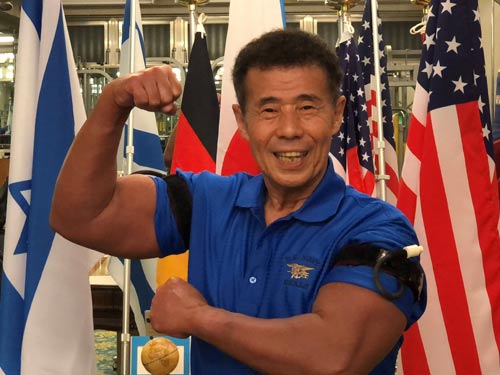
BRF involves exercising your muscles while partially restricting arterial inflow and modifying venous outflow in either both proximal arms or legs.1 Venous flow restriction is achieved by using thin elastic pneumatic bands on the extremity being exercised.
By modifying the venous blood flow, you create a relatively hypoxic (low oxygen) environment in the exercising muscle, which in turn triggers a number of physiological benefits, including the production of hormones such as growth hormone and IGF-1, commonly referred to as “the fitness hormones.”2
It also increases vascular endothelial growth factor (VEGF), which acts as “fertilizer” for growing more blood vessels and improving their lining (endothelium).
KAATSU was developed over five decades ago by Dr. Yoshiaki Sato. At 72, Sato is still in excellent shape and a true testament to the value of this approach. As noted by Munatones, Sato experimented on himself for seven years, trying to determine the best way to build and maintain muscle. Eventually, he developed the protocols that are still in use today.
Between 1996 and 2015, Sato, along with exercise physiologist Naokata Ishii and Dr. Toshiaki Nakajima, a renowned cardiologist at the University of Tokyo Hospital, performed a variety of groundbreaking research, proving the benefits of KAATSU and discovering its underlying mechanisms. A lot of research on the more generic version, BFR, has also been done in the U.S. in recent years.
BFR Helps Prevent Sarcopenia
Sarcopenia, or age-related muscle loss, is a serious problem in the U.S., and BFR can go a long way toward preventing this progressive and debilitating degeneration. It’s not just the muscle fibers that are being lost in sarcopenia.
You lose muscle strength. There’s something more going on than just atrophy. The degeneration has to do with the quality of your mitochondria, which get depleted, damaged and dysfunctional with advancing age.
Traditionally, conventional resistance training has been recommended to prevent sarcopenia. The problem is that heavy weights need to be used, and many elderly simply cannot perform these exercises.
BFR allows you to use very light weights, or no weights at all, which not only makes the exercise easier, but also cuts down the very real risk of injury. Since the muscle damage is reduced, you also recover faster than when doing heavy weight training. There’s very little or no delayed onset muscle soreness (DOMS) when doing BFR, as you’re not causing inflammation by tearing muscle fiber.
In essence, you’re tricking your body into believing that it’s lifting a weight far heavier than you actually are. As a result, you’re able to get the benefits of heavy lifting with virtually none of the damage. You just get the benefits.
Key Differences Between BFR and Conventional Training
Your “one-rep max” is the maximum amount of weight you can lift one time. Typically, when you’re doing conventional strength training, you’re working with weights in the range of 60% to 80% of your one-rep max.
In BFR, you’re using no more than 30% of your one-rep max. Low weight is actually one of the key aspects of effective BFR. The second key is a high number of repetitions. Rather than doing just eight or 12 reps, you’re doing 30 reps in the first set.
If you can do 30 of the next two sets, great, or you can go down to fewer reps. A third key is to minimize the amount of time between your sets. Sato recommends resting just 20 to 30 seconds between sets.
As mentioned, BFR involves strapping on thin elastic pneumatic bands on the extremities being worked and controlling it with handheld KAATSU units. For your arms, you want to avoid keeping the bands on for more than 15 minutes. For your legs, the recommended max is 20 minutes.
As for frequency, it depends on the form of BFR you’re using. If you have a KAATSU device and are using the cycle function, you can perform BFR as often as you want, including several times a day. The cycle function involves a period of pressure followed by complete depressurization of the inflatable cuff.
On the KAATSU device, the cycling mode is 30 seconds of pressure, five seconds of pressure off, 30 seconds of a higher pressure, five seconds off, 30 seconds of higher pressure. When using the training or noncycling mode, which has sustained pressure, you can do it once a day for 15 to 20 minutes, but it’s not recommended to do it any more than that.
BFR for Muscle Rehabilitation
In the interview, Doolittle recounts how he ended up getting into BFR training. During his 25-year career in the U.S. Navy, he had 11 orthopedic procedures done. After his last shoulder surgery, the physical rehabilitation therapist used KAATSU. He’d had an identical injury six years earlier, yet this time he recovered in about half the time. That got his attention.
“The beauty of KAATSU is you can really stress the musculature and the physiology of the body without straining the skeletal system. I think that’s the game changer when you’re talking about rehabilitation,” Doolittle says, “because we’re always interested in rapid rehabilitation, we want to get the guys back on the battlefield as quickly as possible.”
How Lactic Acid Influences Muscle Growth
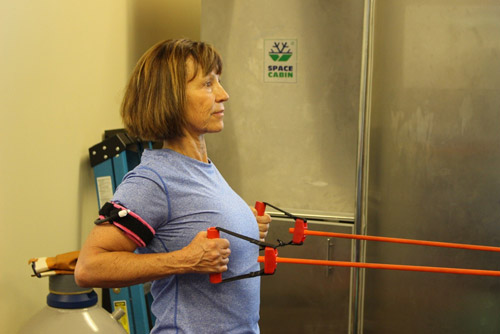
The benefits of BFR are the result of restricting blood flow while working your limb — either the arms or the legs. Importantly, you’re not causing total occlusion. You’re merely restricting blood flow to about half of the arterial occlusion pressure.
Blood continues to flow in the limb, so there’s continued oxygen delivery, but at a radically reduced level. The venous output, however, the venous return back to your heart, is nearly stopped. As a result of that, you get an accumulation of metabolites.
To understand how BFR works, you need to understand that you have two types of muscle fibers. Type 1 fibers use oxygen and build endurance. Type 2 muscle fibers are fast and glycolytic. They use hardly any oxygen at all. Instead, they obtain their energy by converting glucose to pyruvate, which is then metabolized anaerobically without mitochondria or oxygen into lactate.
Lactic acid metabolism is what generates extra protons that cause the burn you get when you do conventional weight training. This burn occurs with BFR as well. In fact, you get even more of a burn because of the blood flow restriction.
When this lactic acid builds up locally, it stimulates a cascade of hormonal and metabolic benefits to cause a radical increase in the size, acutely and chronically, of your muscle, and the strength of the muscle. You can tell that this is occurring because your muscles swell up.
When done correctly, your muscle will typically swell by at least an inch in circumference. My arms start at about 13 inches in circumference and swell to 14.5 inches after I’m finished with a training session. It stays enlarged and swollen for a while.
The reason for this swelling is because your Type 1 fibers become exhausted from the lack of oxygen, forcing Type 2 fibers to kick in. You need to activate your Type 2 fibers to actually grow the muscle.
As a result of activating your Type 2 fibers, the lactate level will accumulate and rise in your muscle since the venous flow return to your heart is obstructed. The lactate increases the osmotic pressure. As a result of that, water has to be brought in to cause homeostatic balance, and this is what causes the swelling.
Lactate also inhibits a myokine called myostatin. “Myo-” means muscles and “statin” means stop, so myostatin is a negative regulator of muscle growth. When you have high levels of myostatin, which tends to occur as you get older, it actually inhibits your ability to produce muscle. By increasing your lactate levels through BFR, you can lower your myostatin by about 50%.
How Lactic Acid Benefits Your Heart and Brain
Once the pressure in the KAATSU bands is released (when you take off the bands), high concentrations of lactate floods into the rest of your body, including your brain, where it can be used as an alternative fuel source, and produces brain-derived neurotrophic factor (BDNF), which is known for its neuroregenerative capability.
The lactate also increases an angiogenic hormone called vascular endothelial growth factor (VEGF), which acts as “fertilizer” for your blood vessels. In short, VEGF helps create more capillaries, thereby improving your microcirculation.
As you get older, this becomes really important, because the capillary supply to your muscle, and specifically Type 2 muscle fibers and the muscle satellite stem cells that surround those Type 2 fibers, get depleted and compromised.
If you have compromised microcirculation in your Type 2 fibers, regular strength training will not result in significant muscle growth. The reason for this is because you have to have good blood circulation to your muscle satellite stem cells to increase muscle growth.
This is one of the reasons why BFR is so effective, as it increases VEGF, which improves microcirculation to your muscle stem cells. VEGF also stimulates capillary growth in your brain and heart, which is also important when you get older.
VEGF also increases a glycoprotein called follistatin (FST1) by as much as 900%, which inhibits myostatin even further. So, for a 15-minute investment of time, you get this incredible muscle growth and a radical improvement in strength.
Why You Need to Maintain Muscle Mass as You Age
Remember, muscle growth is not just about cosmetics or even mobility. Your muscles serve functions other than helping you move around. They’re actually very important metabolic organs that allow you to normalize your glucose levels and activate insulin.
If you have more muscle mass, your insulin sensitivity is likely to be better and you’ll be less prone to diabetes and obesity. It also prevents frailty, which is a real killer. Greater muscle mass also provides a reserve of protein, which is necessary when you get injured. It can even help your immune function.
So, it’s really important to maintain optimal muscle mass as you’re aging, and I cannot think of a better, more effective intervention than BFR training, because you don’t have to use heavy weights.
The loss of resilience as a result of sarcopenia is underappreciated as a major factor in the ability to recover from life’s inevitable challenges. It is clear that elderly with low muscle mass experience delayed recovery,3,4 have higher rates of complications and infections following surgery,5 greater drug toxicity,6 and higher disease-specific and all-cause mortality.7
So having reserve muscle mass is an important protein buffer. If you ever get sick and need to go to the hospital this reserve can literally spell the difference between you getting out of the hospital alive or going to the cemetery.
BFR Reverses Many Aging Characteristics
Because of the blood restriction, you get this magnificent metabolic cascade that actually reverses, in some ways many aging characteristics. You don’t even need to use weights if you don’t want to. It can be implemented with bodyweight training as well. As noted by Munatones:
“Over 70% of our users are people over the age of 50. Most of those people, unlike the Navy SEALS, like John, or Olympic professional athletes, they’re not actually into any kind of resistance training.
We just have them go through the motion of movement, whether that’s stretching, whether that’s extending your arms up with the bands on. We see the effects.
Their arms may not increase an inch and a half, but most of our users over the age of 50, they’re not motivated or they’re not interested in an inch and a half growth. They just want to be more toned or be able to stretch and rub the top of their head or touch their toes if they’re standing up.
Those people … [can do] the KAATSU cycle, 15 minutes a day, twice a day, and without any extra equipment. They find that to be effective, convenient and very sustainable.”
BFR Walking, Swimming and More
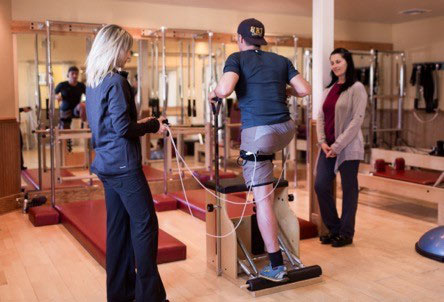
Another way you can benefit from BFR without weights is to strap on a pair of BFR bands on your legs, near your groin, and then simply walk with them on. Typically, the recommended max is 20 minutes unless you have a KAATSU device in cycling mode; then you can walk longer.
You’ll get extraordinary benefits just by walking with BFR. I walk on the beach in the ocean nearly every day I am home. Or you can do squats, calf raises, lunges or a variety of other leg exercises. Yet another option is to put the bands on while swimming or doing aquatic exercises or when stretching. The applications are almost limitless.
BFR can also help speed up recovery after a broken bone. If your arm is in a cast, for example, you could simply place the band above your bicep and do unweighted arm lifts three times a day or use the KAATSU cycling mode. Even quadriplegics can use and benefit from BFR, although in this case you really need a KAATSU or BFR device with the cycling program.
Getting the Correct Pressure
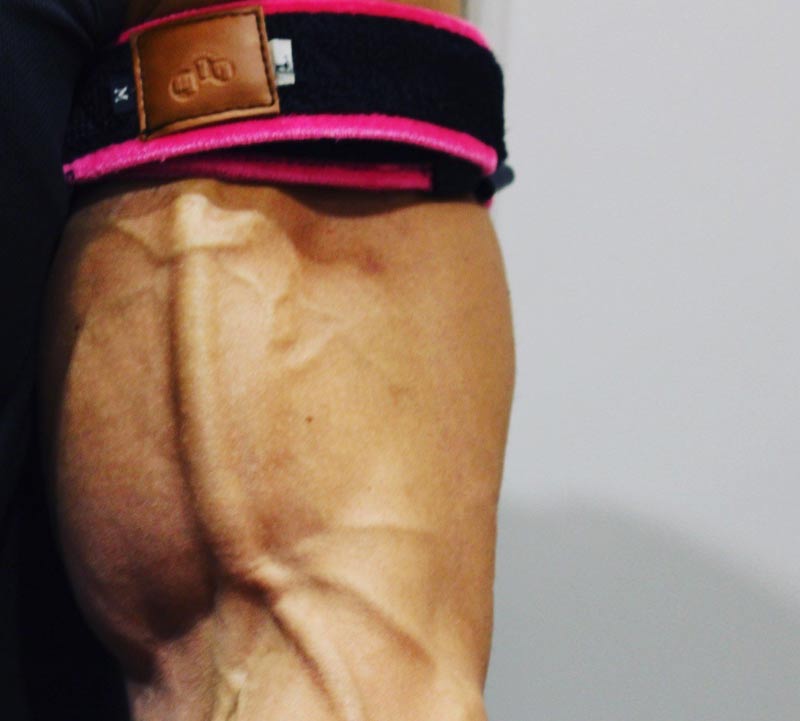
As mentioned, BFR involves placing narrow elastic pneumatic bands around your arms or legs (the extremity being worked), but it’s important to get the pressure correct, as you do not want to stop blood flow altogether.
A simple test to check half or full pressure is to press your thumb into the area of your palm right below the thumb of your other hand until the area turns white. Release the pressure and observe how long it takes for the area to turn pink again.
If it’s less than a second, your band is probably tight enough. If it’s longer than three seconds, the band is too tight. If you experience any pain, numbness or tingling in your limb, it’s too tight and you must remove the band. What you’re aiming for is a pinkness or beefy redness in the palms of your hands or in your legs.
Once you’ve confirmed that you have the appropriate pressure for you (everyone is different), then you can do the exercise. Again, exercise should be restricted to 15 minutes for the arms and 20 minutes for the legs when wearing the bands.
On BFR Equipment
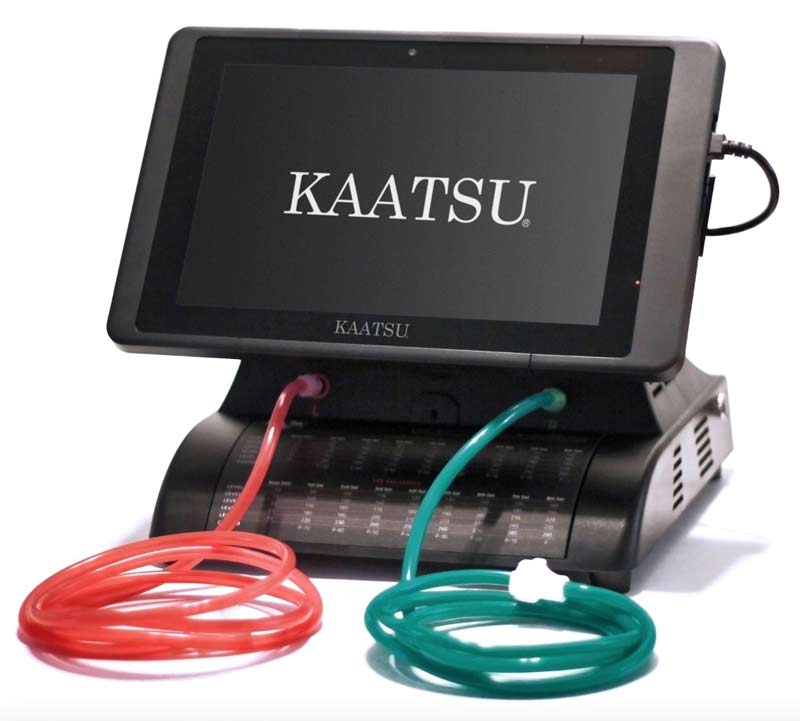
When it comes to equipment, you have a range of options, depending on your budget. When the professional KAATSU device was first introduced it was $16,000. That price eventually reduced to $5,000 and then a home version, called Nano, was $2,100.
The latest device, KAATSU Cycle 2.0, is now only $800 and you can purchase it on their website. In my mind, this is the best exercise investment I have ever made and now that the price is finally under $1,000 it becomes available to far more people.
The other alternative is to pick up a pair of inexpensive BFR bands, which are typically in the range of $25 to $50. They’re easy to use and easy to transport when traveling. The drawback is that you need to learn how to apply the proper pressure, and you cannot do KAATSU cycling (where the pressure in the cuff is raised and lowered at intervals).
You can find out more details about these bands by the comprehensive BFR instruction manual I created.
When using the bands, the pressure will remain consistent. You can still reap the benefits, though, and for many, an inexpensive set of bands may be all that’s needed. That said, there are important drawbacks of these bands that you need to be aware of. Munatones explains:
“I typically would look at cost as an inverse relationship to risk … We [engineered the band] so that the entire limb sits on a bed of air. Therefore, when you move the limb and change its circumference, the band is not only elastic, but also the muscle is sitting against a bed of air and it adjusts appropriately.
Now, if you have cardiac issues, if you are taking medications, if you’re older, morbidly obese, sedentary, et cetera, I personally would never ever put a band around my arm that is nonuniform in its pressure.
With air, it’s completely uniform. Also, when you put bands on, the amount of pressure that is on the limb, when it’s not elastic, will change … Our whole company and everything that Dr. Sato has been working towards and accomplished is fundamentally based on one key principle. That’s safety.
Because our core market is people over the age of 50; the oldest person who we have actively doing KAATSU is 104 … we’re trying to be extraordinarily safe … It’s really a safety factor.
Warm Up Before Doing BFR With Bands
Sato himself always uses cycling, because it helps warm up vascular tissue. At the capillary level, the cycled pressure allows for gradual stretching to occur, and Doolittle notes that “We never do any KAATSU sustained pressure until we’ve warmed up the vascular tissue.”
“It’s one thing if we’re talking about young, elite or tactical athletes who are already doing all kinds of other exercise to warm up their system,” Doolittle adds, “but if you’re a sedentary, somebody … who’s 50, 60 or 100 years old who is not warming up the vascular system before going right up to that optimal pressure, there are potential issues with that.
I kind of think of it as a guy going to the gym — he’s not going to throw 300 pounds on the bench press and get after it. He’s going to warm up to that.”
Another safety aspect to consider is the width of the band. They must not only be elastic, but they also must not be too wide. Many BFR bands on the market are 2 inches wide, which can be problematic. You want to make sure the bands you get for your arms are 1 inch wide, while the bands for your legs should be 2 inches wide.
While you need to use them responsibly, making sure you warm up first, before you put them on, and do your BFR exercises, I’ve found them to be an excellent option if you cannot afford a BFR device.
Professional Athletes Can Benefit in Many Ways
Professional athletes would also benefit greatly from investing in a BFR device, as the cycling program can really help with warmup and recovery. Doolittle explains how pro-swimmer Michael Andrew uses BFR:
“What’s incredible with Michael is he doesn’t just use it for training. He also uses it for the recovery immediately after heavy work. He uses it to warm up before an event. Imagine somebody getting ready before a big swimming event.
They’re in the ready room and they have the bands on, doing … the pressure-on, pressure-off, engorging at the capillary level … getting the vasculature nice and wide open right before an event to help with just simply improving blood flow …
And then … what Michael started experimenting with was instead of going into the warm-down pool, [he goes] right to the table where the trainers put the KAATSU bands on his legs. He does a cycle on his legs, two cycles on his arms or vice versa, in order to help flush those toxins and lactic acid out.
Because even when the bands are at a very tight aspect, they’re never so tight that the blood’s not moving. But the cardiac output or the stroke volume has to increase in order to keep the blood flowing, right? So now if you imagine you have the leg bands on, they pressure up.
Everything gets engorged distal of the bands. Now you have this rapid complete decrease in pressure, and the stroke volume cardiac output has responded to these tight bands. So now you have this almost flushing sensation. You really feel it …
He would use it as a warm-up and use it as a warm-down. In his training phases, he’ll swim in an untethered mode, which creates a pretty high lactic acid aspect and the corresponding hormonal cascade that comes with that during the training. He uses it for the whole enchilada.”
More Information
To learn more, check out their Cycle 2.0 site. There you will also find the details on the various KAATSU devices available. They also offer a KAATSU specialist certification program should you want to learn how to train others.
“We welcome any and all inquiries and questions,” Munatones says. “It could be from an academic researcher, a Ph.D., an M.D., or someone who knows nothing about exercise and science. We want to introduce this to everyone from the very best athletes to quadriplegics from coast to coast.”
Doolittle adds:
“The way I look at it is, yes, you can help any athlete make incremental improvements. I’ll guarantee that, 100%. But what’s more interesting to me than incremental improvement to an athlete [is that BFR] can have an exponential change in life for somebody who might be dealing with metabolic syndrome, hypertension or a whole host of things that better circulation helps them with.”
Indeed, it’s very difficult to lead a fulfilling life unless you have adequate muscle function, and BFR training will help you achieve that. It really is the single best, most effective strategy available. I’m just disappointed it took me this long to find this approach, as I could have been using it for decades already. Still, it’s so radically effective, I’m making significant gains even now.
from Articles https://ift.tt/36s2Kgv
via IFTTT
No comments :
Post a Comment